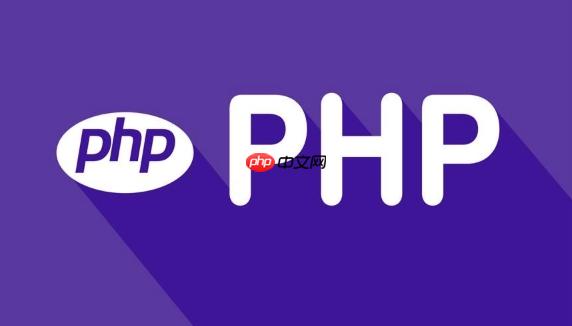
PHP的反射API(Reflection API)是一个相当强大的工具,它允许开发者在运行时检查、修改甚至调用类、对象、方法和属性。简单来说,它就像给PHP代码装上了一双“透视眼”,能让你看到并操作那些在编译时通常无法触及的内部结构。这对于构建高度灵活、可扩展的系统,比如各种框架和库,简直是如虎添翼。
解决方案
要深入理解并运用PHP的反射API,我们主要会和一系列
Reflection开头的类打交道。它们是这个API的核心,各自负责反射不同类型的代码结构。
最基础的,我们有
ReflectionClass,它能让你拿到一个类的所有信息:它的属性、方法、构造函数、父类、接口等等。实例化
ReflectionClass很简单,传入类名即可。
getName() . "\n";
// 获取公共方法
$methods = $reflector->getMethods(ReflectionMethod::IS_PUBLIC);
echo "Public Methods:\n";
foreach ($methods as $method) {
echo "- " . $method->getName() . "\n";
}
// 获取所有属性
$properties = $reflector->getProperties();
echo "Properties:\n";
foreach ($properties as $property) {
echo "- " . $property->getName() . " (Visibility: " . ($property->isPublic() ? 'public' : ($property->isProtected() ? 'protected' : 'private')) . ")\n";
}
?>接下来,
ReflectionMethod和
ReflectionProperty则分别用于获取和操作类中的具体方法和属性。通过它们,你可以调用私有方法,修改私有属性,甚至检查方法的参数类型。
立即学习“PHP免费学习笔记(深入)”;
getName() . "\n";
// 获取方法参数
$parameters = $methodReflector->getParameters();
echo "Method Parameters:\n";
foreach ($parameters as $param) {
echo "- " . $param->getName() . " (Type: " . ($param->hasType() ? $param->getType()->getName() : 'none') . ")\n";
}
// 实例化ReflectionProperty
$propertyReflector = new ReflectionProperty('MyClass', 'property');
echo "Property Name: " . $propertyReflector->getName() . "\n";
echo "Is Private: " . ($propertyReflector->isPrivate() ? 'Yes' : 'No') . "\n";
// 示例:动态调用方法和访问属性
$instance = new MyClass('init');
// 调用公共方法
$result = $methodReflector->invokeArgs($instance, ['arg1', 123]);
echo "Method Call Result: " . $result . "\n";
// 访问并修改私有属性 (需要设置可访问性)
$propertyReflector->setAccessible(true); // 允许访问私有属性
$currentValue = $propertyReflector->getValue($instance);
echo "Current private property value: " . $currentValue . "\n";
$propertyReflector->setValue($instance, 'New Value');
echo "New private property value: " . $propertyReflector->getValue($instance) . "\n";
// 调用私有方法
$privateMethodReflector = new ReflectionMethod('MyClass', 'privateMethod');
$privateMethodReflector->setAccessible(true);
$privateResult = $privateMethodReflector->invoke($instance);
echo "Private Method Call Result: " . $privateResult . "\n";
?>还有
ReflectionFunction用于反射全局函数,
ReflectionParameter用于反射方法或函数的参数,以及
ReflectionExtension、
ReflectionGenerator、
ReflectionZendExtension等更专业的反射类。掌握这些基础,你就能打开PHP运行时操作的大门。
PHP反射API在框架开发中扮演什么角色?
反射API在现代PHP框架的构建中,几乎是不可或缺的基石。它赋予了框架极大的灵活性和自动化能力,使得开发者能够以更声明式、更简洁的方式编写代码。
一个最典型的应用场景就是依赖注入(Dependency Injection, DI)容器。当你定义一个类的构造函数需要某些依赖时,DI容器会利用反射来检查这个构造函数的所有参数。它会识别出每个参数的类型提示(type hint),然后根据这些类型提示,自动从容器中解析出对应的实例,并注入到你的类中。这样,你就不需要手动去
new每一个依赖了。例如:
definitions[$id] = $concrete;
}
public function get(string $id) {
if (isset($this->definitions[$id])) {
return $this->definitions[$id]($this);
}
// 如果没有定义,尝试通过反射自动解析
if (!class_exists($id)) {
throw new Exception("Class or service '{$id}' not found.");
}
$reflector = new ReflectionClass($id);
$constructor = $reflector->getConstructor();
if (is_null($constructor)) {
return $reflector->newInstance();
}
$dependencies = [];
foreach ($constructor->getParameters() as $parameter) {
$type = $parameter->getType();
if ($type && !$type->isBuiltin()) { // 检查是否是类类型
$dependencies[] = $this->get($type->getName());
} else {
// 处理非类类型参数,或者抛出错误,或者使用默认值
throw new Exception("Cannot resolve parameter '{$parameter->getName()}' for class '{$id}'.");
}
}
return $reflector->newInstanceArgs($dependencies);
}
}
class Logger { /* ... */ }
class Mailer {
public function __construct(Logger $logger) {
// ...
}
}
$container = new Container();
$container->set(Logger::class, fn() => new Logger());
$mailer = $container->get(Mailer::class); // Mailer会自动注入Logger
// ...
?>此外,ORM(对象关系映射)也大量依赖反射。当ORM需要将数据库行映射到PHP对象时,它会通过反射来检查对象的属性,了解它们的名称、类型,然后将数据库查询结果动态地填充到这些属性中。反过来,当需要将对象保存到数据库时,ORM也会反射对象属性来构建SQL语句。
路由和控制器的自动化也是反射的常见应用。很多框架允许你通过注解(annotations)或者属性(attributes,PHP 8+)来定义路由,例如
#[Route('/users', methods: ['GET'])]。框架在启动时会扫描这些控制器类,利用反射找到带有特定注解的方法,并将其注册为对应的路由处理器。path = $path;
$this->methods = $methods;
}
}
class UserController {
#[Route('/users', methods: ['GET'])]
public function index() {
return "List of users";
}
#[Route('/users/{id}', methods: ['GET'])]
public function show(int $id) {
return "Showing user {$id}";
}
}
// 模拟路由扫描
$reflector = new ReflectionClass(UserController::class);
foreach ($reflector->getMethods() as $method) {
$attributes = $method->getAttributes(Route::class);
foreach ($attributes as $attribute) {
$route = $attribute->newInstance();
echo "Registering route: " . $route->path . " for method " . $method->getName() . "\n";
}
}
?>这些都展示了反射API如何让框架变得更加“智能”和“魔幻”,减少了样板代码,提升了开发效率。
如何利用反射API实现动态方法调用和属性访问?
动态方法调用和属性访问是反射API最直接也最常用的功能之一,尤其是在需要处理不确定对象结构或实现某种“插件”机制时。
动态方法调用主要通过
ReflectionMethod的
invoke()或
invokeArgs()方法实现。
invoke()用于不带参数的方法,或者参数可以直接按顺序传入;
invokeArgs()则接受一个数组作为参数,这在参数数量或名称不确定时非常有用。
假设我们有一个配置数组,其中包含了要执行的类名、方法名和参数:
'ServiceProcessor',
'method' => 'processData',
'args' => [['item1', 'item2'], 'report']
];
try {
$classReflector = new ReflectionClass($config['class']);
$instance = $classReflector->newInstance(); // 创建对象实例
$methodReflector = $classReflector->getMethod($config['method']);
// 检查方法是否可访问(比如是私有或保护方法)
if (!$methodReflector->isPublic()) {
$methodReflector->setAccessible(true); // 如果是私有或保护方法,强制设为可访问
}
$result = $methodReflector->invokeArgs($instance, $config['args']);
echo "Dynamic method call result: " . $result . "\n";
// 尝试动态调用私有方法
$privateMethodReflector = $classReflector->getMethod('logActivity');
$privateMethodReflector->setAccessible(true);
$privateResult = $privateMethodReflector->invoke($instance, 'User accessed report.');
echo "Dynamic private method call result: " . $privateResult . "\n";
} catch (ReflectionException $e) {
echo "Error: " . $e->getMessage() . "\n";
}
?>setAccessible(true)在这里是个关键,它能让你绕过PHP的可见性限制(
public,
protected,
private),强制访问那些通常不应从外部访问的方法或属性。这在某些特定场景下非常有用,但也要谨慎使用,因为它可能破坏封装性。
动态属性访问则通过
ReflectionProperty的
getValue()和
setValue()方法实现。同样,
setAccessible(true)在这里也扮演着重要角色,允许你读取和修改私有或保护属性。
false,
'databaseHost' => 'localhost'
];
public string $appName = 'MyApp';
}
$configObj = new Configuration();
// 动态访问公共属性
$appNameReflector = new ReflectionProperty(Configuration::class, 'appName');
echo "Current app name: " . $appNameReflector->getValue($configObj) . "\n";
$appNameReflector->setValue($configObj, 'MyNewApp');
echo "New app name: " . $appNameReflector->getValue($configObj) . "\n";
// 动态访问私有属性
$settingsReflector = new ReflectionProperty(Configuration::class, 'settings');
$settingsReflector->setAccessible(true); // 允许访问私有属性
$currentSettings = $settingsReflector->getValue($configObj);
echo "Current private settings: " . json_encode($currentSettings) . "\n";
// 修改私有属性
$currentSettings['debugMode'] = true;
$settingsReflector->setValue($configObj, $currentSettings);
echo "Modified private settings: " . json_encode($settingsReflector->getValue($configObj)) . "\n";
?>这种动态操作在序列化/反序列化、数据映射、以及构建通用工具时非常实用。比如,一个通用的
toArray()方法,可以反射对象的所有属性,然后把它们收集到一个数组中。
反射API的性能开销和最佳实践是什么?
虽然反射API功能强大,但它并非没有代价。在运行时进行类结构分析和动态操作,通常会比直接调用方法或访问属性带来显著的性能开销。这主要是因为PHP引擎需要做更多的工作来查找、解析和操作这些元数据。
具体来说:
-
对象实例化开销:创建
ReflectionClass
、ReflectionMethod
等对象本身就需要时间。 - 元数据查找:引擎需要遍历类定义,查找对应的方法、属性或参数,这比直接的函数表查找要慢。
-
动态调用/访问:
invoke()
、invokeArgs()
、getValue()
、setValue()
等操作需要额外的内部检查和调度,无法享受JIT编译等优化。
因此,反射API不应该被滥用。对于那些可以静态确定的、频繁执行的操作,直接调用永远是更优的选择。
最佳实践:
-
缓存反射结果:这是最重要的优化策略。如果你需要多次反射同一个类或方法,不要每次都重新创建
Reflection
对象。将ReflectionClass
或ReflectionMethod
的实例缓存起来,下次直接使用缓存的实例。 仅在必要时使用:只在构建框架、库、DI容器、ORM、插件系统等需要高度动态性和扩展性的场景中使用反射。对于业务逻辑中直接、明确的调用,避免使用反射。
避免在热路径(Hot Path)中使用:如果一段代码会被频繁执行(例如在一个循环内部),尽量避免在其中使用反射。即使有缓存,首次反射的开销也可能影响性能。
PHP 8+ 的Attributes:PHP 8引入了Attributes(属性),它在很多方面可以替代传统的基于注释的反射。Attributes在编译时被解析并存储为类元数据,访问它们通常比解析PHPDoc注释更快。
性能分析:如果你怀疑反射是性能瓶颈,使用Xdebug等工具进行性能分析,找出具体的瓶射调用开销。
总的来说,反射API是一把双刃剑。用得好,能让你的代码更灵活、更强大;用不好,可能会带来不必要的性能损耗和维护复杂性。理解其工作原理和限制,并遵循最佳实践,是发挥其真正价值的关键。































